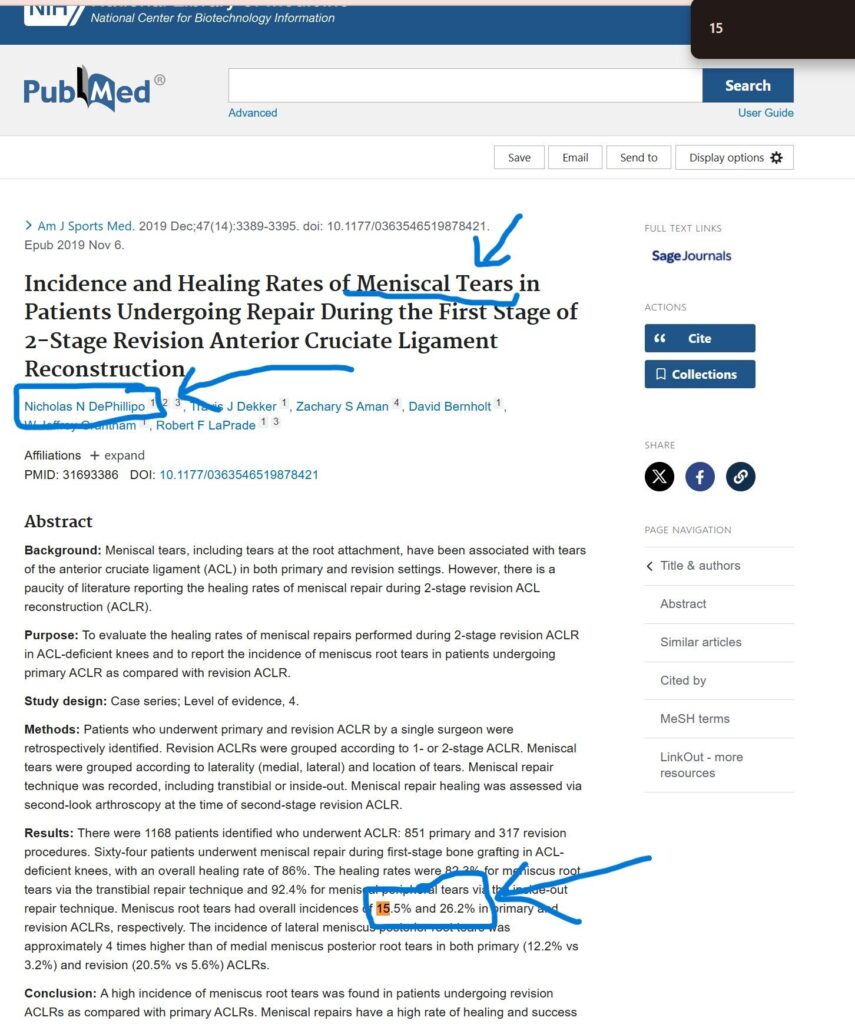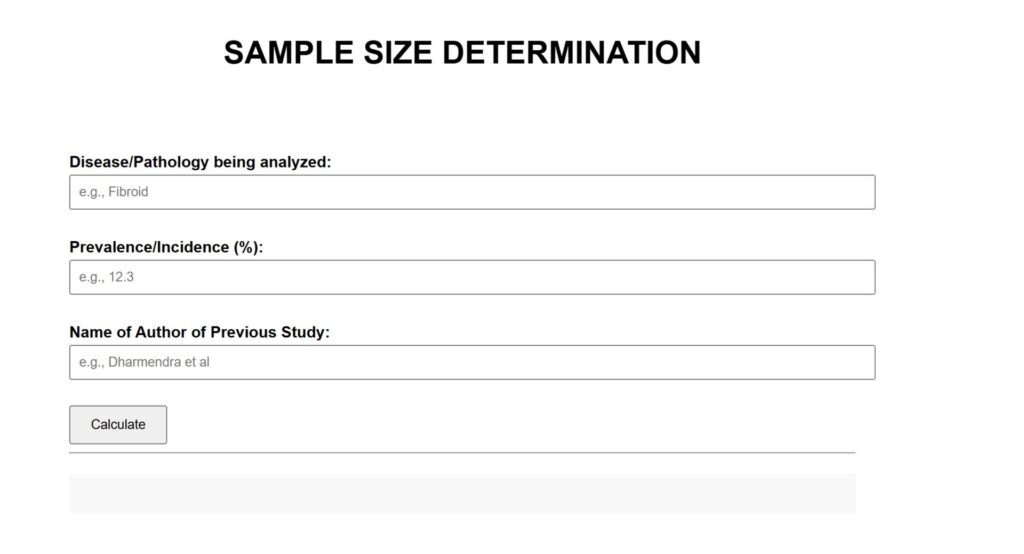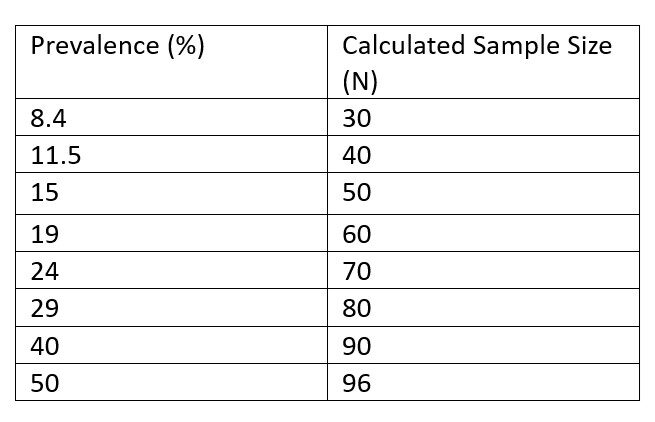IT IS NOT RECOMMENDED TO USE THIS CALCULATOR IF THE PREVALENCE OF DISEASES IS LESS THAN 9% . BECAUSE THEN THE SAMPLE SIZE WILL BE TOO SMALL. IF THE PREVALNCE OF THE DISEASE IS LESS THAN 9 THEN DONT USE THIS CALCULATOR.
In that case use – No of cases in pilot study based formula.
One of the Major Problem Faced By Residents while Writing Synopsis as well as thesis is determination of sample Size.
Now With this calculator you can instantly generate the whole sample size calculations in seconds in just 1 click. However before using it
There are certain simple rules you need to understand.
There are 3 inputs you need to have before you start using this calculator.
1. Is the pathology or disease you are studying for example Meniscal tear. This you will have ti carefully write, suppose your thesis is on
Meniscal tear then You will write Meniscal tear in 1st input.
2. Now 2nd input is MOST IMPORTANT- All calculations will depend upon this input so take it directly and exactly from a study similar
to your thesis
3. Name of First Author.
As An example See the Screenshot below

Here
1st input is defined pathology “Meniscal Tear”
2nd Input is incidence/prevalence of “meniscal tear”
(if its range you can take mean like if range is given 20-30 then you
can take prevalence as 25, or you can take minimum prevalence ie 15)
3rd input is Name of 1st Author ( Put as it is)- Nicholas N Dephillipo

Refer To following table for approximate prevalence/percentage values so that you have an idea about which study to select as pilot study. Since the calculator page can be used only once its important that you have an idea about expected sample size.
Example : See table If you want a sample size near 60 then you should choose a study which has reported incidence/prevalence to be near 25.

All these things you should note down before you actually use the sample size calculator page. If you follow these instructions carefully. You will get an ideal sample size calculation. Will all its text and calculations which you can directly paste in your protocol/thesis.
SO summary is this.
1. Select a study which is similar to study and have prevalence/incidence which is expected to give sample size near to you desired value (Refer above table for this)
2. Note down pathology ie meniscal tear, prevalence/incidence figure ie 15% and name of the author Nichola N Dephillipose
And you are set to generate your complete sample size calculations with ready to paste text.
Best Luck
